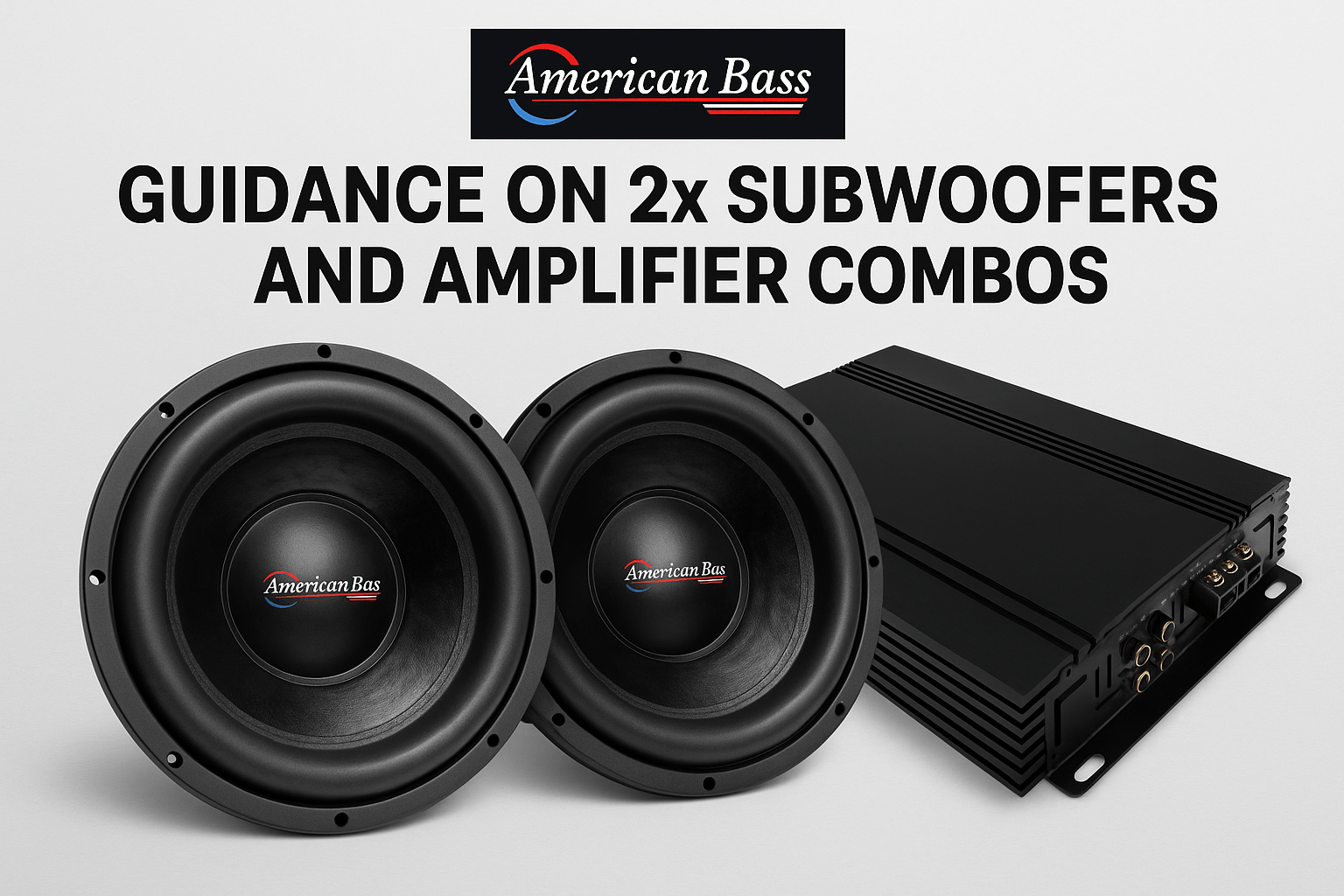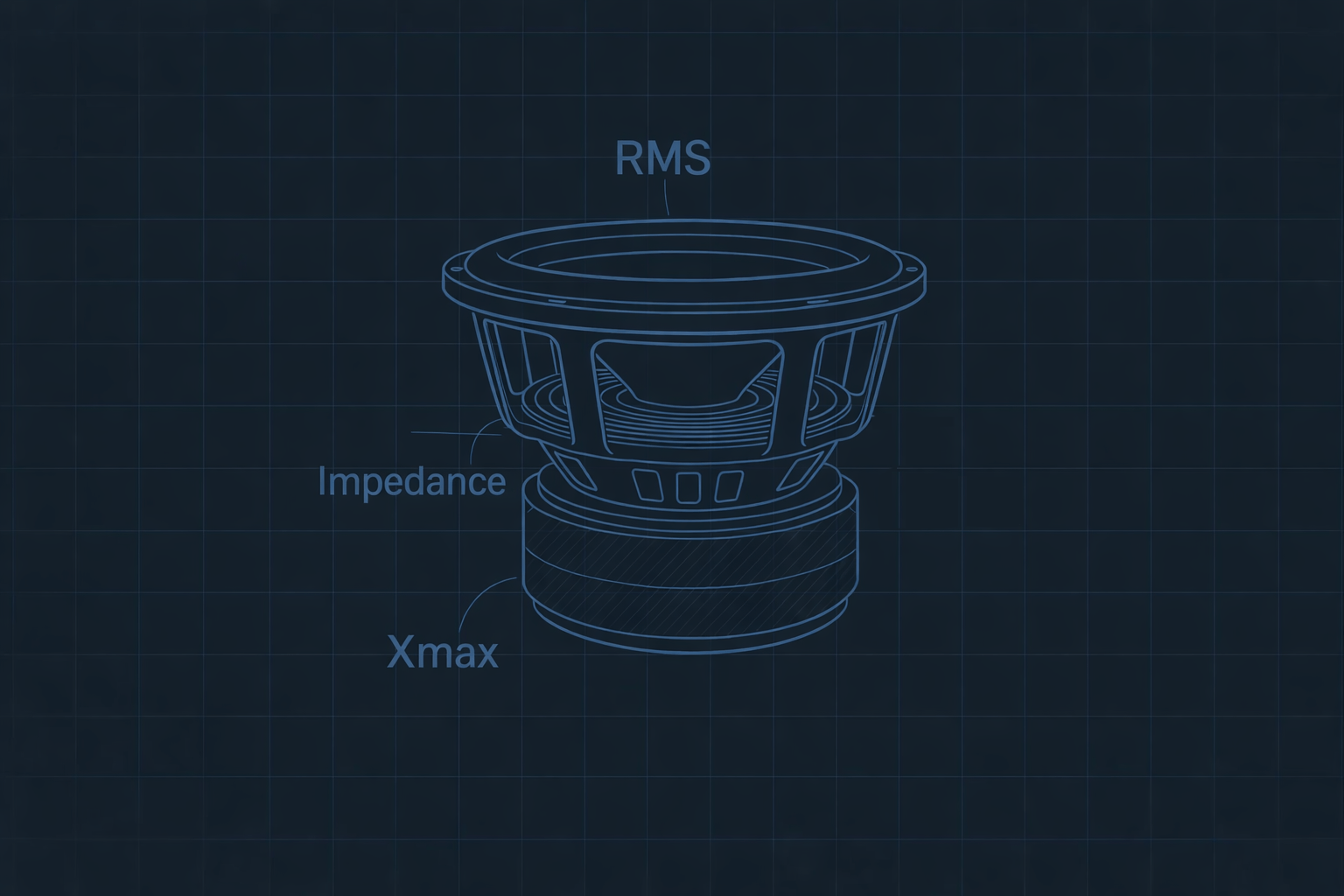If you're designing a custom box, tuning for SPL, or just want to go deeper into how subwoofers perform, these advanced specs give you the tools to get the most from your build.
📏 Vas (Equivalent Compliance Volume) – Measured in Liters or Cubic Feet
What it means:
Vas describes how much air has the same springiness as the subwoofer’s suspension.
Why it matters:
Higher Vas = better performance in larger boxes. It’s a key variable in enclosure design formulas.
🎛️ Qts (Total Q Factor) – Unitless
What it means:
Qts blends mechanical (Qms) and electrical (Qes) damping to measure total system losses.
Why it matters:
-
Qts < 0.4 → Great for ported boxes
-
Qts > 0.5 → Better for sealed boxes
🔁 Fs (Free Air Resonance) – Measured in Hz
What it means:
Fs is the natural frequency the sub vibrates at without an enclosure.
Why it matters:
Lower Fs = better deep bass performance.
Look for Fs < 40 Hz for subwoofers built for low-end impact.
⚙️ Qms & Qes (Mechanical and Electrical Q Factors)
What they mean:
-
Qms = Mechanical damping (suspension system)
-
Qes = Electrical damping (voice coil/motor losses)
Why they matter:
Used to calculate Qts, and help refine enclosure tuning.
🧩 Displacement – Measured in Cubic Inches, Liters, or Cubic Feet
What it means:
The space taken up inside a subwoofer enclosure by the sub itself.
Why it matters:
If your box is small, this can significantly affect tuning. Always subtract this from internal volume.
🔌 Terminal Type
What it means:
Types include push terminals, binding posts, or spring-loaded connectors.
Why it matters:
Better terminals make installation cleaner and wiring more secure—especially with high-power or multi-sub setups.
📐 Mounting Hole & Overall Diameter
What they mean:
-
Cutout diameter = size of the hole the sub drops into
-
Overall diameter = total physical width of the subwoofer
Why they matter:
Important for precision installs in prefab, fiberglass, or space-limited boxes.
🧠 When to Use These Specs
If you're:
-
Building a custom enclosure
-
Competing in SPL or SQ
-
Matching subs to DSP tuning or precise amp output
...these specs are worth considering alongside the basics like RMS, impedance, and frequency response.
✅ Final Thoughts
Understanding your subwoofer’s specifications helps you choose the right gear and avoid mismatched components. Whether you want tight bass, competition-level SPL, or something in between, these specs are your roadmap to better sound.
🔗 Ready to find the right subwoofer for your build?
Explore the full American Bass Subwoofer Collection here.




